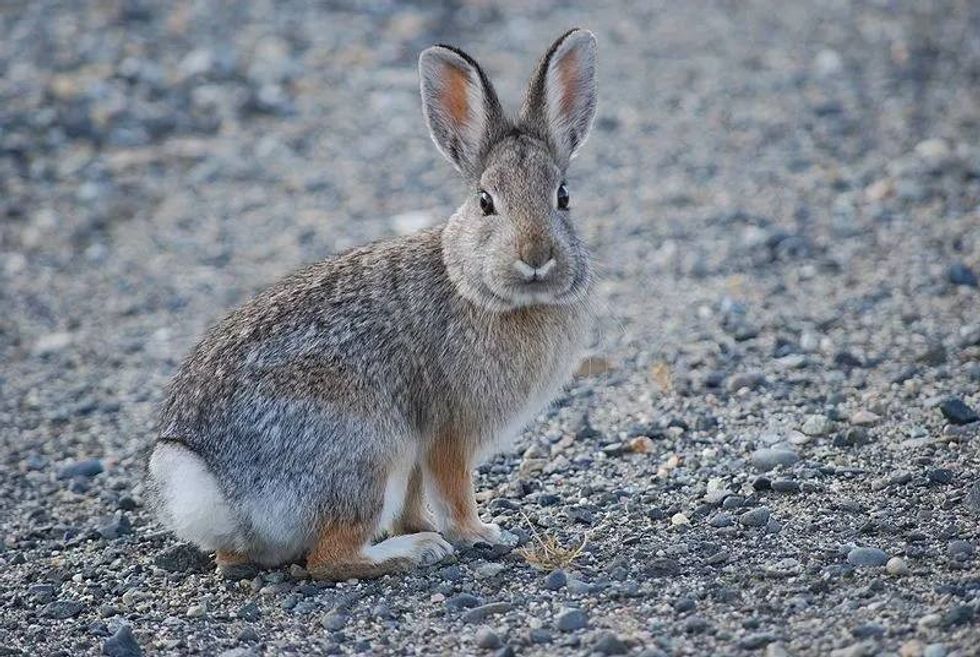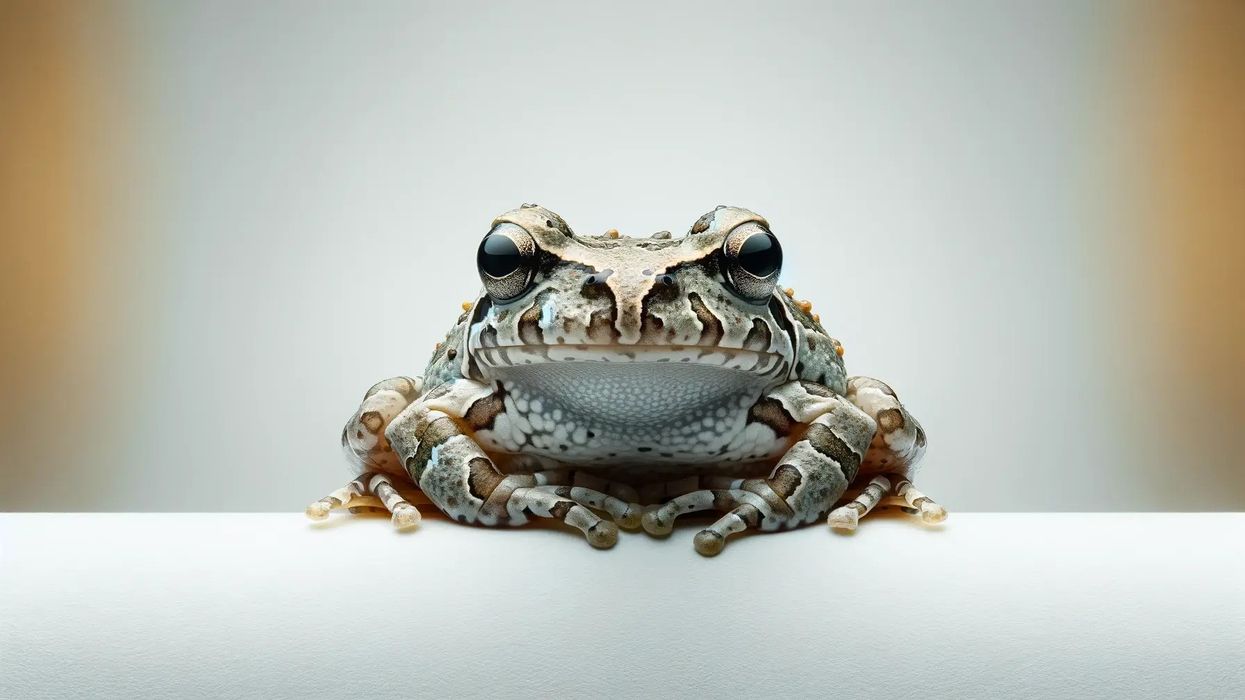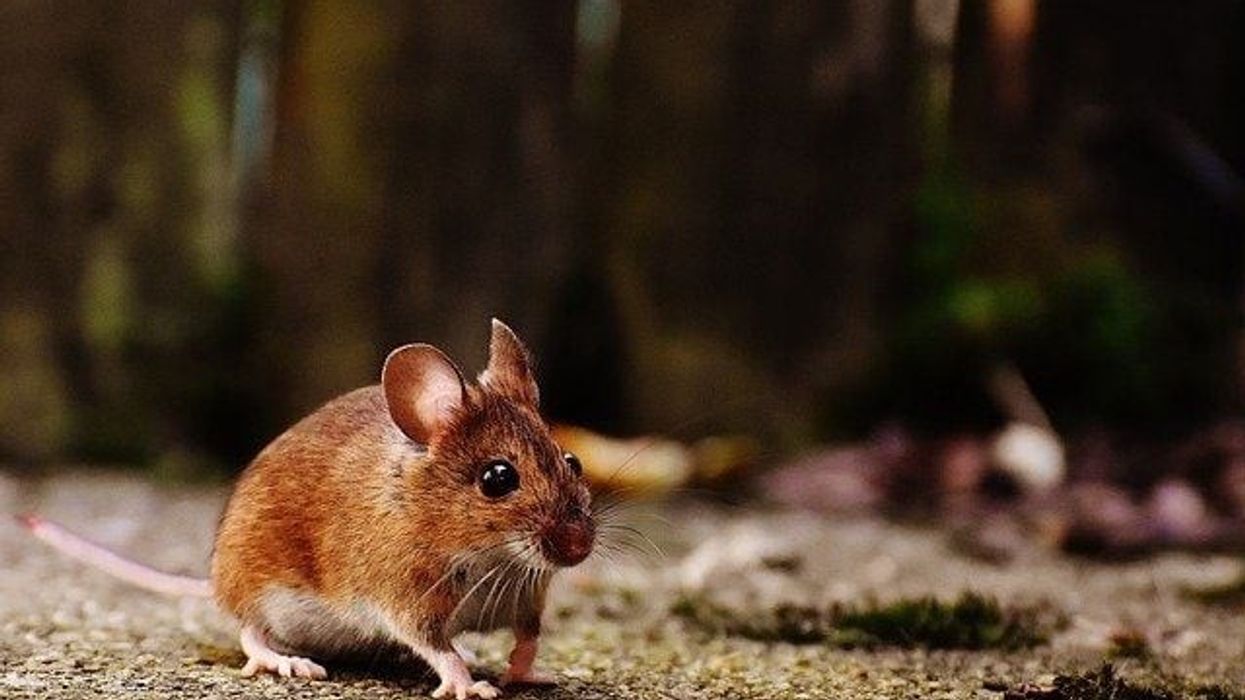The mountain cottontail, also known as Sylvilagus nuttallii scientifically and as Nuttall's cottontail, belongs to the Leporidae family. These species are liked by humans because of their appearance and their characteristics.
These animals are medium-sized and its body is covered with pale brown or grayish-brown fur or hairs. The hind legs are long and the tail of this animal is long too.
The tail is large, colored on the tips and lighter below, and the legs are covered with reddish-brown hairs. The appearance of the young is altricial and does not have hairs.
The diet is primarily based on grasses like wheatgrass and bluegrass. The diet or the food sources also include shrubs depending on the area and it also eats woody parts like barks during winter.
Not much is known about the families and reproduction of these species but they mate around March and July and they do not form pair bonds.
Females produce four to five litters a year. The mountain cottontail rabbit distribution is confined to the intermountain area of North America.
The mountain cottontail's lifespan is around two years. This species, Sylvilagus nuttallii or Nuttall's cottontail, uses tactile and chemical methods to communicate.
This species, Sylvilagus nuttallii, is highly wild and does not make great pets, and is considered to be of danger as they tend to attack when threatened. It is quite interesting to know about the Sylvilagus nuttallii or mountain cottontail and if you're interested, read about the Eastern Cottontail and Desert Cottontail too.
Mountain Cottontail Interesting Facts
What type of animal is a mountain cottontail?
The Mountain Cottaintail or Nuttall's Cottontail is a rabbit.
What class of animal does a mountain cottontail belong to?
The Mountain Cottontail belongs to the class of mammals.
How many mountain cottontails are there in the world?
There has been no specific number of Mountain Cottontails or Nuttall's cottontails in the world recorded.
Where does a mountain cottontail live?
This cottontail species is confined to the intermountain area of North America. It ranges from above the Canada-United States border south to Arizona and New Mexico. It is found in the foothills of the Rocky Mountains and the Cascade-Sierra Nevada range, east to western North Dakota and the Black Hills.
What is a mountain cottontail habitat?
These cottontails inhabit brushy or wooded areas on riverbanks or slopes covered with grass, willows, and sagebrush. If there is a lack of vegetation, these cottontails can be found hiding in rock crevices and burrows.
Who do mountain cottontails live with?
These Mountain Cottontail rabbits are solitary animals and tend to live alone.
How long does a mountain cottontail live?
On average the mountain cottontail rabbit lives for around two years while in captivity they can live up to seven years.
How do they reproduce?
These cottontails or Sylvilagus nuttallii mate between March and July and they tend to always mate at night. These rabbits do not form pair bonds.
Females make the nest which is cup-shaped and made with grass, twigs, and sticks. The gestation period lasts for about 28-30 days and the female can produce four to five litters per year. The young are altricial with no hair and are blind.
The young can move outside when their weight is around 75 g and the young are weaned after one month. Sexual maturity seems to be at a minimum of three months at least, but it is believed that it probably happens later.
What is their conservation status?
The conservation status of these animals is Least Concern.
Mountain Cottontail Fun Facts
What do mountain cottontails look like?
The Mountain Cottontail is a medium-sized rabbit. Its characteristics include its long hind legs which are covered with long and dense reddish-brown hair and a large tail that is dark-colored on top or tips and light below.
The body parts are covered with pale brown or grayish-brown on the top and the underbelly is white. The ears of the cottontail are round and short.
Whiskers are usually white. The females have 8-10 mammae and are larger than males. Young ones do not have hair.
How cute are they?
These rabbits are considered to be cute by most people.
How do they communicate?
Not much information is available about the communication of these rabbits but it is believed that it uses tactile and chemical methods to communicate with each other.
How big is a mountain cottontail?
The length of the cottontails ranges from 13.8-15.4 in (350-390 mm) and their weight is around 1.5-2.6 lb (0.7-1.2 kg).
How fast can a mountain cottontail run?
These cottontails can reach a speed of about 18 mph (29 kph).
How much does a mountain cottontail weigh?
Cottontails' weight ranges from 1.5-2.6 lb (0.7-1.2 kg).
What are the male and female names of the species?
There are no specific names for the males and females of the species.
What would you call a baby mountain cottontail?
A baby of this mountain cottontail is called a kit or kitten.
What do they eat?
The diet of the cottontails mostly consists of grasses like wheatgrass, Indian ricegrass, needle and thread, cheatgrass brome, bluegrass, and bottlebrush squirreltail. Sometimes, depending on the area it also feeds on shrubs such as saltbushes, and big sagebrush. During winters when the food options are limited, it also eats woody parts like bark and twigs.
Are they dangerous?
These animals may lash out to protect themselves and as they are wild, they are considered to be of danger to humans.
Would they make a good pet?
While a lot of rabbits or hares have been bred for this purpose, this rabbit is not included in that list. These are wild ones and do not make good pets. This animal is easily stressed in captivity and is untrusting and it is very difficult to bond with these rabbits as pets.
Did you know...
Female mountain cottontails are 5% larger than males.
One of its interesting characteristics includes that this animal is crepuscular.
This animal uses less than 10% of its energy during the reproductive season and after the mating process, the males tend to become more secretive and stealthy.
Over 50% of the time this animal is active, it is feeding.
Heavy rain or wind can reduce the chances of this animal eating out in the open.
When this animal is frightened, it runs several meters and freezes with its ears erect to assess the situation. If it continuously feels threatened, then it hops and tricks the predator by running in a semi-circular path.
Predators of a mountain cottontail rabbit include coyotes, bobcats, martens, crows, ravens, hawks, owls, and rattlesnakes.
The droppings of these species are a good fertilizer.
Female babies are slightly more abundant than male ones.
The skull features or characteristics of this animal are observed and are considered to be quite interesting. It has a rounded braincase and a dental formula of 2/1, 0/0, 3/2, and 3/3, with large molariform teeth.
Do cottontails live in groups?
Some cottontails are social and tend to live in groups but these mountain cottontails are solitary ones. The reason for this solitary nature is believed to be low food availability and sparse shelter in their habitat.
Do cottontail rabbits mate for life?
No, these mountain cottontails do not mate for life. The exact reason is unknown but it is believed that they are constantly moving.
Here at Kidadl, we have carefully created lots of interesting family-friendly animal facts for everyone to discover! Learn more about some other mammals including the Arctic hare or European rabbit.
You can even occupy yourself at home by drawing one on our cottontail rabbit coloring pages.










